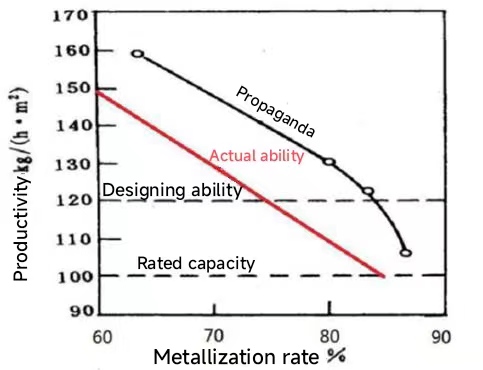Technology of Coal-based Direct Reduction Iron(4)——FASTMET method
1. Simple introduction
The FASTMET rotary hearth furnace process, developed by MIDREX and Kobe Steel, is mainly used for blast furnace dust and rolling sludge treatment. It is reported that dezinization rates can be greater than 95% and DRI with metallization rates of 70-90% can be obtained. The world's first FASTMET process, which uses iron containing waste as raw material, was put into production in The second quarter of 2000 at Nippon Steel Hiroda Plant in Japan, with an annual processing capacity of 190,000 tons.
2. Basic process
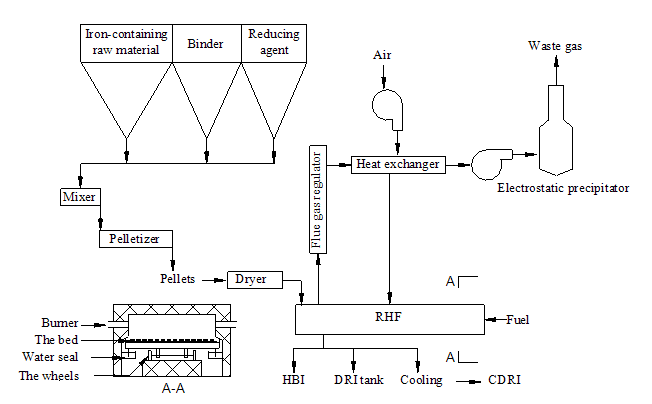
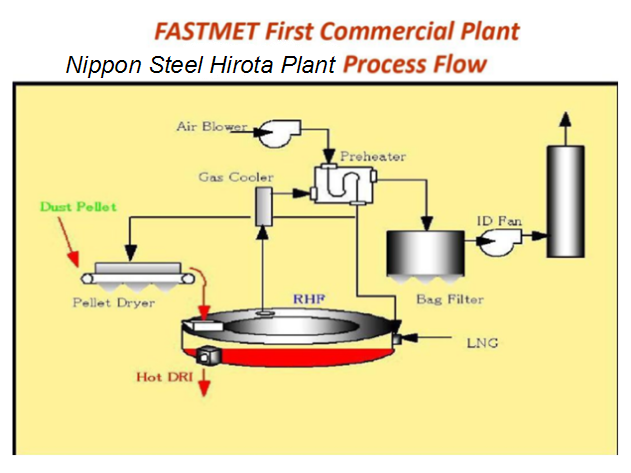
3. Characteristics of FASTMET Method
● Coal powder is used as the reducing agent, and only a small amount of natural gas or LNG is used. The quality requirements for coal are not as strict as the rotary kiln process, so it is beneficial for wide application.
● The main equipment is RHF furnace, compared with rotary kiln, the equipment is relatively simple, low investment, low energy consumption.
● This process uses pelletizing disks and organic binders to prepare carbon-containing pellets, which does not require high strength of pellets.
● The residence time of the charge in the RHF is short (about 20Min), the operation is easy, and the metallization rate can reach 70-90%.
Kakogawa Commercial Plant Material Flow
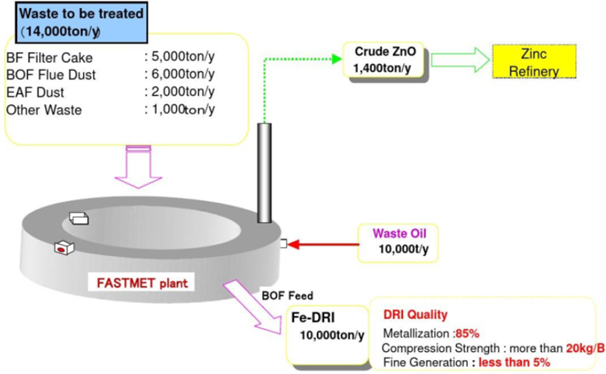
4. Fuel consumption between FASTMET and small blast furnace, total energy consumption comparison

5. Kobe Steel FASTMET process data
The construction of a FASTMET production line that can process 200,000 tons of dust per year requires an investment of 3 billion yen (270 million RMB). The process covers an area of 80x150 square meters. The particle size of coal powder and iron-containing raw materials is ≤3mm, and the water content of pellets is 7-8. %, Japan’s Hirota Plant used to be a pelletizing plate, but it was changed to a coal briquette machine in 2005.
There are only 1.5 layers of balls in the RHF furnace. The discharge temperature of the DRI products produced by Fastmet is 1000℃, the metallization rate is 70-90%, and the carbon content is 2-3%. Used after water cooling, the gas heating value required by this process must be greater than 2000Kcal/m3, the flame temperature of the radiant heat transfer in the furnace is 1200-1400℃, and the equipment operation rate is about 92%. This process consumes 2.24GJ of natural gas per ton of DRI. (Approximately 63m³), 80 kWh electricity and 320kg coal powder, the designed productivity of RHF is 100kgDRI/m3.h.
FASTMET's current (improved) process
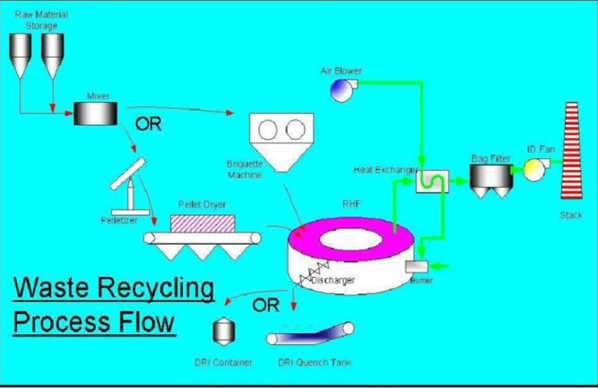
Relationship between metallization rate and productivity of FATMET process
